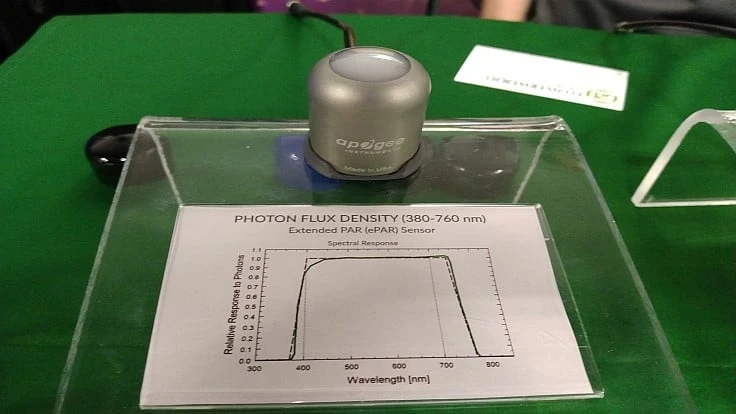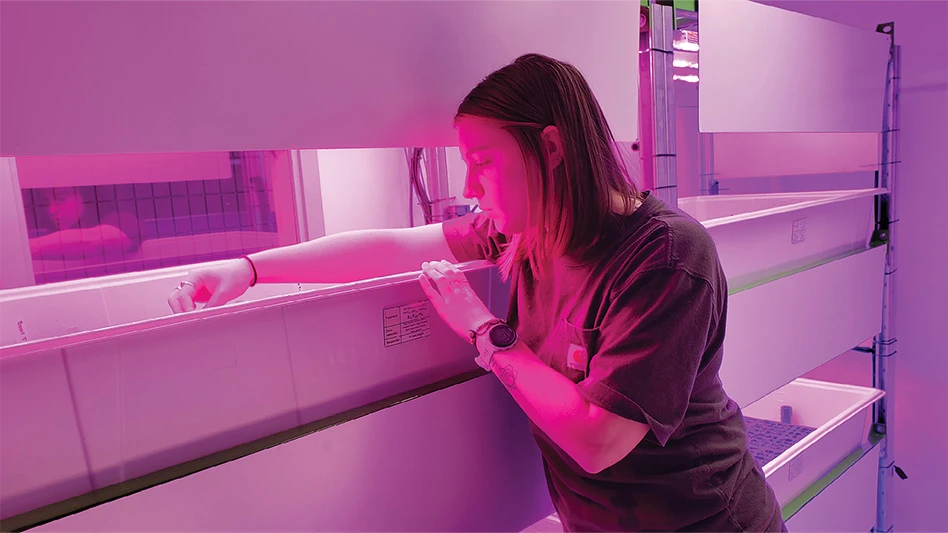
A fundamental change in how we define photosynthetic active radiation (PAR) is afoot, at least if you believe two researchers who presented at Cultivate’21 this week in Columbus, Ohio.
Utah State University’s Dr. Bruce Bugbee discussed some intriguing findings at Cultivate'21 from ex-graduate student Dr. Shuyang Zhen, a former student of Bugbee’s who is now a researcher in Texas A&M’s ag program.
Her work was recently published in a prominent scientific research report in June 2021, arguing that far red photons should be included in the definition of photosynthetic photons, and that standards should be developed to quantify the amount of those photons being provided by horticultural lighting. Basically, PAR needs a bit of an upgrade.
“This is an enormous paradigm shift in our thinking because we have defined photosynthetic radiation the same way for decades,” Bugbee says, noting that the far-red spectra – which sits at the spectral edge of what the human eye can perceive on its own – is now being discovered to be more useful in plant photosynthesis than once thought.
For decades, according to the two researchers, growers and lighting consultants have measured and quantified spectral lighting on the McCree Curve, which accounted for PAR ranges anywhere between 400-700. The problem with that is that modern PAR meters have basically excluded the far-red spectra, which falls between 700-750 on the prospective McCree Curve.
The researchers are proposing a tweak, so that PAR meters developed in the future (Editor’s Note: Apogee Instruments, a company Bugbee maintains an ownership interest in, has an ePAR meter available today. It is pictured above) will take into account the amount of far-red photons that LED fixtures are outputting. Once growers and lighting consultants can properly measure it, it will be easier to incorporate far-red into lighting recipes and quantify it's effect. This is especially important in CEA leafy green operations, according to Bugbee.
“In lettuce crops far-red by itself does virtually nothing, but when you combine far-red with white spectra Shuyan Zhen’s research shows compelling evidence that far-red photons are indeed photo synthetic, and we should be counting them,” he states.
Zhen also took her research beyond lettuce, evaluating far-red photon treatments combined with other spectra on 17 different crop species. Everything from soybeans, wheat, even ornamentals.
As far as current recommendations go, the duo advise that greenhouse growers should continue to use the 400-700 PAR standard , and then use the new ePAR standard (380-760 nano moles) when “going above 700.” But, they caution, it’s going to take some time.
“Erik Runkle at MSU is using ePAR, and a well-known photo biologist at MSU, Thomas Sharkey, reviewed this research and he said this is really great stuff and we need to change the definition (of PAR),” Bugbee says. “When science changes then eventually the standards will change. It’s an exciting time.”
Latest from Greenhouse Management
- CEA Alliance celebrates bipartisan introduction of Supporting Innovation in Agriculture Act
- Dümmen Orange North America celebrating 25th anniversary in 2025
- CEA HERB Part 1: Best management practices for culinary herbs
- Lawsuit challenges new H-2 visa rules
- CEA HERB Part 2: A guide to increasing the sowing density of culinary herbs
- Illinois Landscape Contractors Association changes name to Landscape Illinois
- 2025 Proven Winners Horticulture Scholarship applications now open
- ICL’s Gemini Granular herbicide now registered for use in California





